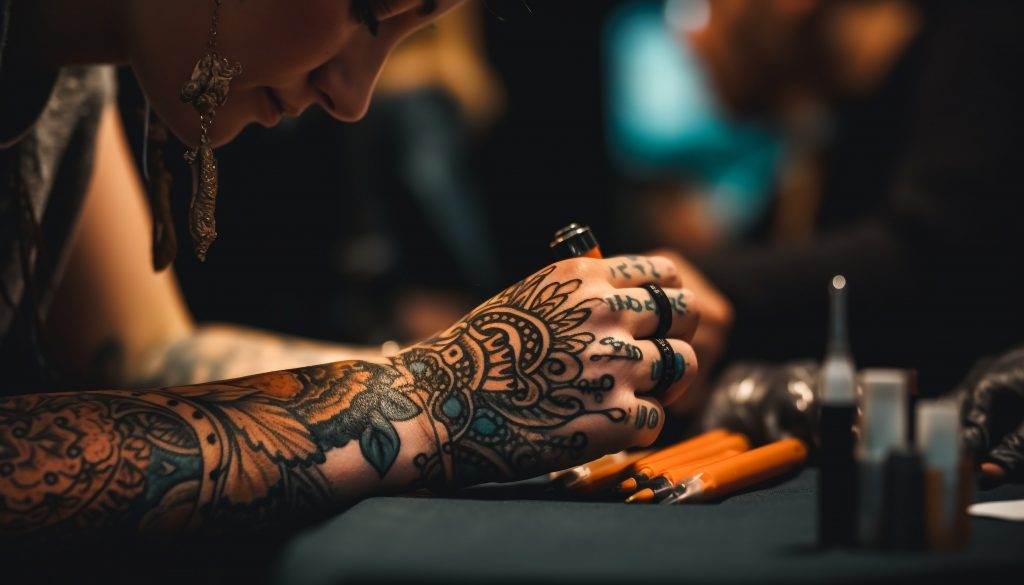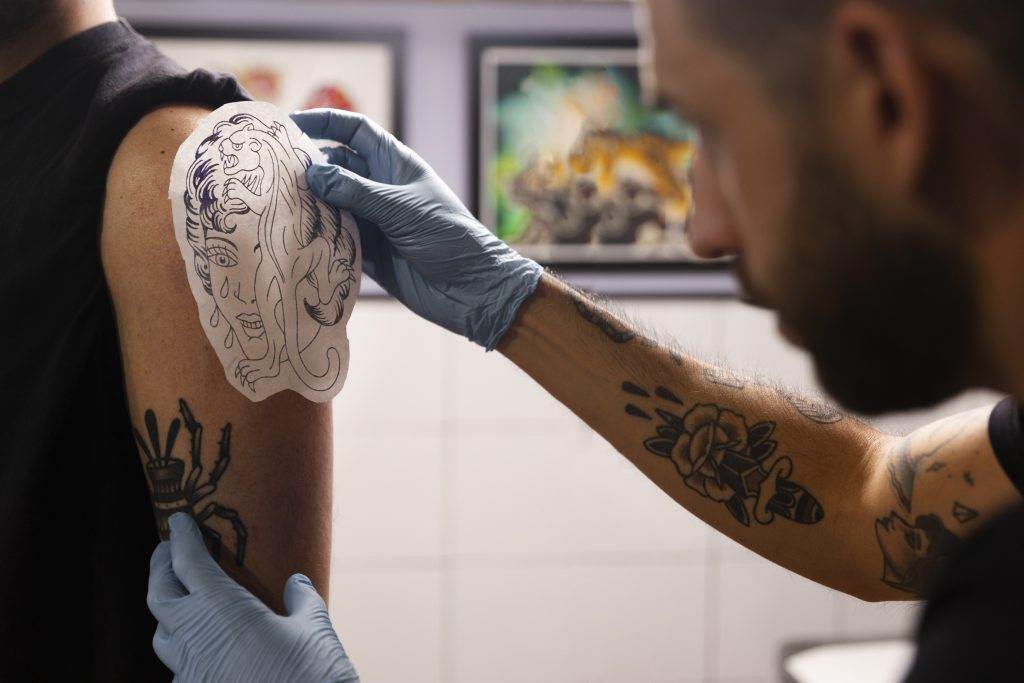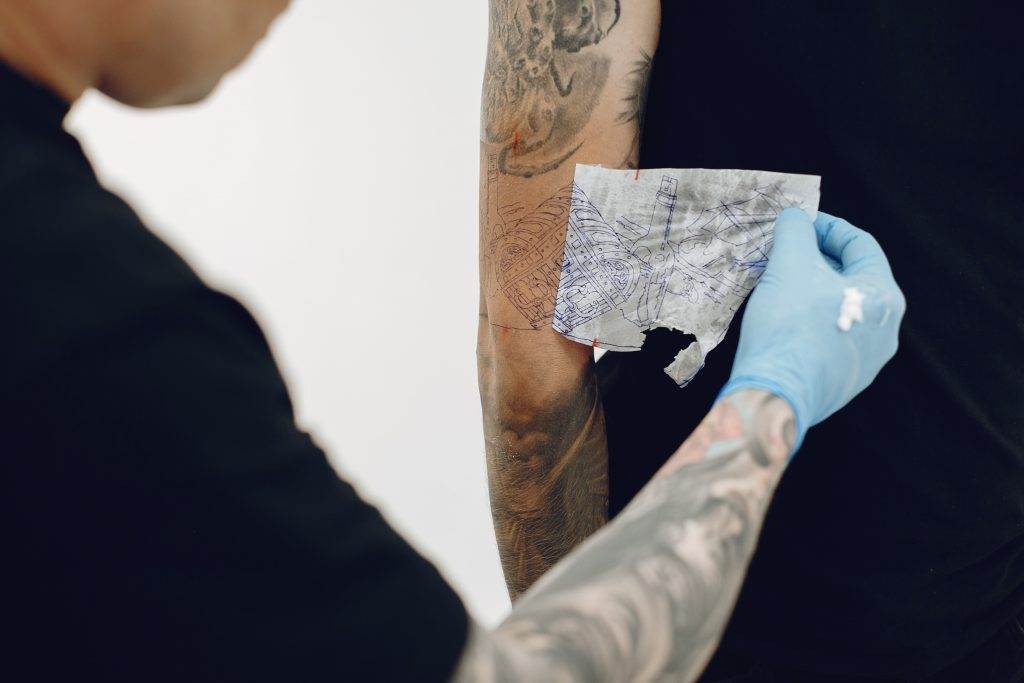Why tattoo consultations are important
When getting a tattoo, it is crucial to have a consultation with the artist beforehand. The consultation provides both the client and the artist with an opportunity to discuss and plan the tattoo design, ensuring that the final result meets the client’s expectations.
During a tattoo consultation, the artist will take the time to understand the client’s vision and ideas. They will discuss the size, placement, and style of the tattoo, as well as any specific details or elements the client wants to include. This open communication allows the artist to provide their professional input and guidance, ensuring that the design will translate well as a tattoo.
Furthermore, the consultation provides an opportunity for the client to ask any questions and address any concerns they may have. Tattooing is a permanent decision, so it is important for clients to feel confident and comfortable with their choice. The consultation allows them to understand the process and get to know the artist, establishing trust and rapport.
Understanding the process of going from concept to reality
Once the initial consultation is complete and both the client and the artist are on the same page, the process of turning the concept into reality begins. First, the artist will create a custom design based on the discussions and ideas shared during the consultation.
Next, the artist will present the design to the client for approval or any necessary revisions. The client’s feedback is crucial at this stage, as it ensures that the final design accurately reflects their vision. After any tweaks or adjustments, the design is finalized.
Once the design is approved, the tattooing process can begin. The artist will prepare the area, sterilize the equipment, and use their skill and expertise to bring the design to life on the client’s skin. Throughout the process, the artist will communicate with the client and make any necessary adjustments to ensure the best outcome.
In conclusion, tattoo consultations are vital for both the client and the artist. The consultation allows for open communication, understanding, and trust to be established, ensuring that the final tattoo design meets the client’s expectations. It also allows the artist to provide their professional input and guidance and ensures that the process of turning the concept into reality goes smoothly.
Discussing the Design
Artistic vision and personal preferences
During a tattoo consultation, the artist takes the time to understand the client’s artistic vision and personal preferences. This involves discussing the size, placement, and style of the tattoo, as well as any specific details or elements the client wants to include. The artist listens attentively to the client’s ideas and provides professional input to ensure that the design will translate well as a tattoo. The client’s artistic vision and personal preferences form the foundation of the design discussion.
Collaborating with the tattoo artist on design ideas
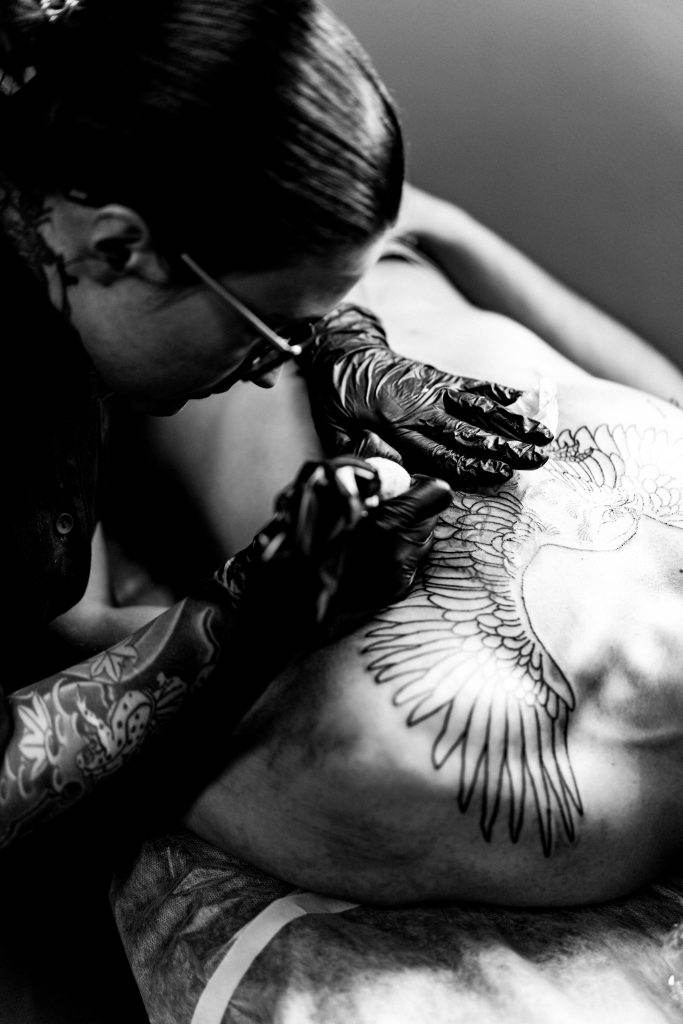
The consultation provides an important opportunity for the client to collaborate with the tattoo artist on design ideas. The artist uses their expertise and creativity to bring the client’s ideas to life and present them in the best possible way. Both parties work together to create a custom design that accurately reflects the client’s vision. It is crucial for the client to express their opinions and provide feedback during this process. In this collaborative environment, the client and the artist can discuss any necessary revisions to ensure that the final design meets the client’s expectations.
During the consultation, the client can also ask any questions and address any concerns they may have. This open communication fosters understanding and clarity, ensuring that both the client and the artist are on the same page before proceeding with the tattooing process.
Ultimately, discussing the design during a tattoo consultation allows for a seamless collaboration between the client and the artist. It ensures that the final tattoo design is a true representation of the client’s artistic vision and personal preferences.
Placement and Size Considerations
Factors to consider when choosing tattoo placement and size
When deciding on the placement and size of a tattoo, there are several factors to consider. These include:
- The client’s personal preference: Each individual has their own unique preferences in terms of where they want the tattoo to be placed on their body, as well as the size they desire.
- The design and its complexity: Certain designs may require more space to be properly represented. Intricate or detailed designs may need a larger canvas, while simpler designs can be done in smaller sizes.
- The body’s natural contours: It is important to consider how the tattoo will flow with the body’s natural shape and curves. Placement should enhance the overall aesthetic appeal of the tattoo and complement the body’s anatomy.
- Professional advice: A skilled tattoo artist can provide valuable input on the optimal placement and size of a tattoo. They have experience in creating designs that not only look visually appealing but also fit well in the chosen area.
Understanding how placement affects design and visibility
The placement of a tattoo can significantly impact its design and visibility. Different areas of the body offer varying levels of visibility and may require specific design considerations:
- Highly visible areas: Tattoos placed on prominent areas such as the arms, legs, or neck will be more easily seen by others. Designs in these areas can be larger and more detailed.
- Semi-visible areas: Areas like the chest, back, or thighs can be partially covered, providing more flexibility in terms of design and size. Clients who prefer a more private or discreet tattoo can opt for these areas.
- Hidden areas: Some people choose to have tattoos in hidden areas, such as the ribs, underarms, or behind the ears. These locations may require smaller or simpler designs since they will be rarely seen by others.
- Consideration for future changes: Placement should also take into account potential changes to the body, such as weight fluctuations or aging. Certain areas may be prone to stretching or sagging, which can affect the appearance of the tattoo over time.
By carefully considering placement and size, clients can ensure that their tattoos not only look aesthetically pleasing but also align with their personal preferences and withstand the test of time.
Color and Style Choices
Exploring different color palettes and styles for tattoos
When it comes to color and style choices for tattoos, there is a wide range of possibilities to explore. This includes considering the color palette that will be used and the style in which the tattoo will be executed.
During the tattoo consultation, the artist will discuss various color options with the client. This may involve considering bold and vibrant colors or opting for a more subdued and monochromatic look. The client’s personal preferences and the design of the tattoo will play a significant role in determining the color palette.
In addition to color, the style of the tattoo is another important factor to consider. There are numerous tattoo styles to choose from, including traditional, realistic, watercolor, geometric, and many more. Each style has its own unique characteristics and aesthetic appeal.
Working with the tattoo artist to achieve desired aesthetics
Collaboration with the tattoo artist is essential to achieve the desired aesthetics of the tattoo. The artist will provide guidance and expertise in selecting the appropriate colors and style that will complement the design and the client’s vision.
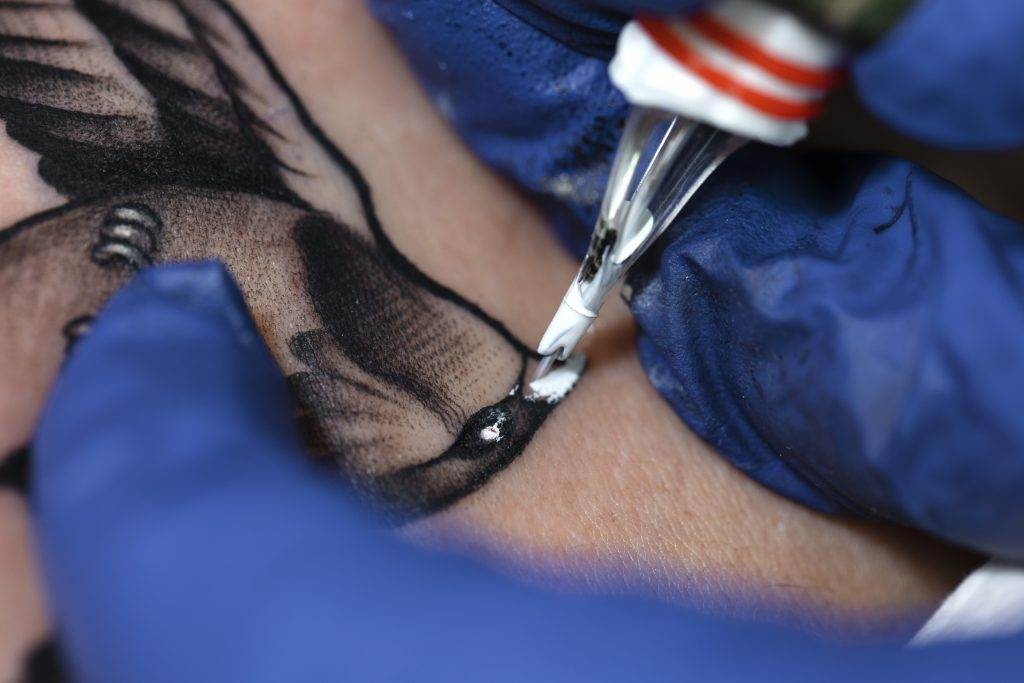
Through open communication and feedback, the client can work closely with the artist to ensure that their desired color palette and style are incorporated into the design. The artist can also offer suggestions and make adjustments to enhance the overall aesthetics of the tattoo.
By working together, the client and the artist can create a tattoo that not only reflects the client’s personal style but also showcases the artist’s skill and creativity. The end result is a visually appealing and customized tattoo that meets the client’s expectations.
Health and Safety Considerations
Importance of discussing medical conditions
Discussing any existing medical conditions with the tattoo artist is crucial to ensure a safe and successful tattooing process. It is important to inform the artist about any allergies, skin sensitivities, or underlying health issues that may affect the healing process or the safety of the tattoo.
By sharing this information, the artist can take necessary precautions and adapt their techniques to minimize any risks or complications. They may also advise against getting a tattoo if certain medical conditions or medications pose a significant threat to the client’s health.
Ensuring a safe and sterile tattooing process
Maintaining a clean and sterile environment is of utmost importance in tattoo studios. Reputable tattoo artists follow strict hygiene practices to prevent the spread of infections and ensure the safety of their clients.
This includes using single-use needles, sterilizing equipment, and maintaining proper sanitation throughout the tattooing process. Artists will often wear gloves and use disposable covers to prevent cross-contamination.
Clients can also play their part in ensuring a safe tattooing experience by following the aftercare instructions provided by the artist. This includes keeping the tattoo clean, avoiding picking or scratching at the healing skin, and applying any recommended ointments or creams.
By prioritizing health and safety considerations, both the client and the tattoo artist can work together to create a tattoo that not only looks visually appealing but also promotes proper healing and minimizes any potential risks.

